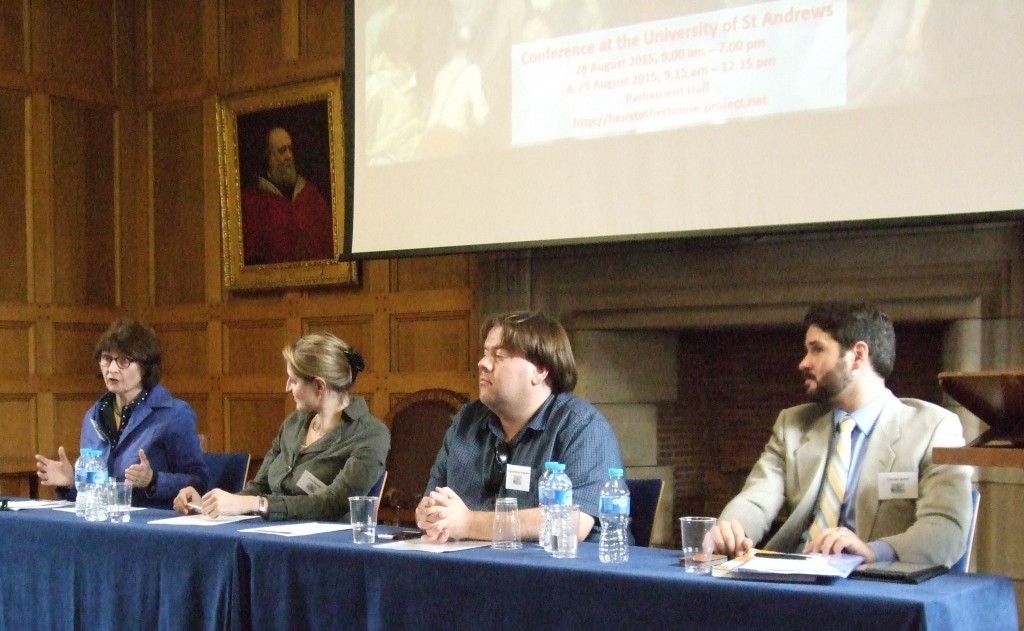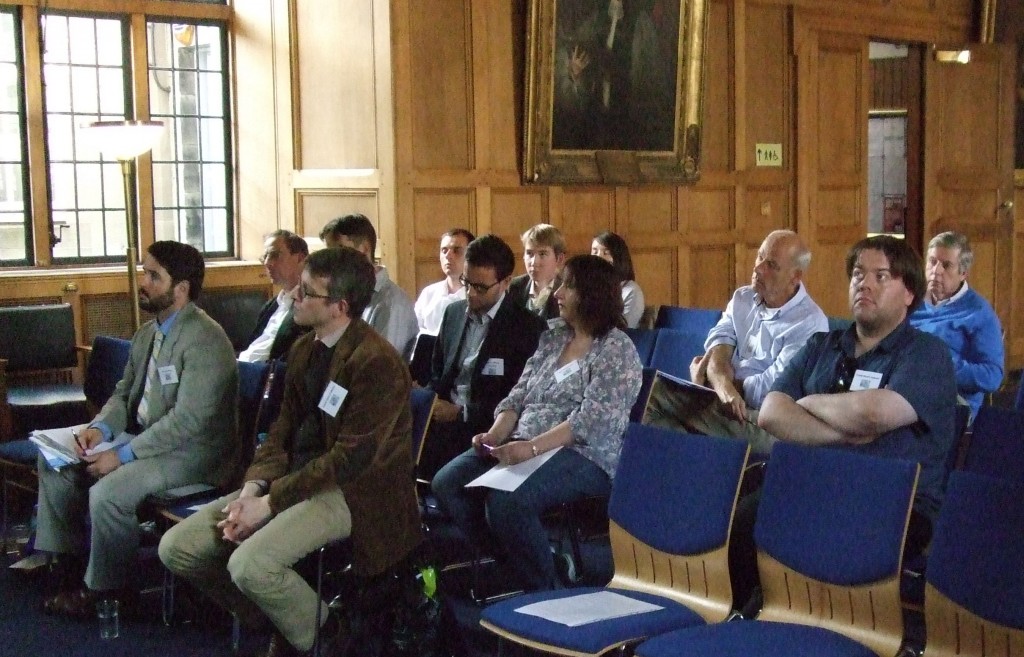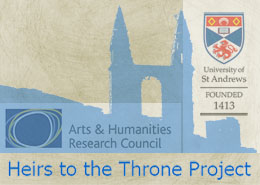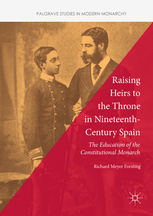“Winning their Trust and Affection” – Royal Heirs and the Uses of Soft Power in Nineteenth-Century Europe 
Charles Jones, Maria-Christina Marchi and Richard Meyer Forsting
The relationship between monarchies and power changed drastically in the course of the nineteenth century. Kings and queens gradually had to give up much of their traditional prerogatives and means of coercion; they increasingly lost control over resources that are often referred to as “hard power”. As a consequence, ruling dynasties had to develop techniques that would generate for them a measure of “soft power” – a capacity defined by the political scientist Joseph Nye as the ability to persuade, co-opt, charm and attract others – as tools of interaction and communication with their subjects. This notion of soft power and its applicability to the development of nineteenth-century monarchy – and especially to the roles played by royal successors embodying and preparing for the exercise of future monarchical rule – was the theme of the second conference organized by the AHRC-funded project “Heirs to the throne in the constitutional monarchies of nineteenth-century Europe”. Over two days an international group of scholars discussed the different means, functions and effects of the deployment of soft power by European heirs to the throne.
In his introduction Frank Lorenz Müller discussed the concept of soft power as developed by Nye and pointed to its utility for understanding some of the successes of nineteenth-century monarchical systems. “If I am persuaded to go along with your purposes without any explicit threat or exchange taking place – in short, if my behaviour is determined by an observable but intangible attraction”, Nye has observed, “soft power is at work.” [1] Using this approach enables us to ask a number of fruitful questions about the relationship between power – both hard and soft – and monarchies:
- Most fundamentally, how can that “observable but intangible attraction” that betrays the successful working of soft power be defined, observed and perhaps even measured when assessing the relationship between monarchy and its relevant contexts?
- According to Nye, the extent of soft power wielded by an agent rests on its culture – by which he means the set of values and practices that create meaning for a given society. But what were those values and practices in nineteenth-century Europe that endowed monarchs with the resources to exercise soft power? To what extent were they shaped, invented, popularized and defended by monarchy? Was there a pre-existing, dwindling stock of “monarchical capital” on which royal families had to eke out an increasingly marginal existence, or could it be replenished or generated, and if so – how?
- Nye observes that “soft power depends more than hard power upon the existence of willing interpreters and receivers”. Who were these interpreters in the case of nineteenth-century monarchies? Did royal heirs fulfil this function (more or less ex officio) for monarchical systems? Which other functionaries emerged and became important in this regard?
- In an information age, Nye argues, power is not only a function of whose army wins, but also of whose story wins. If this is so, and if monarchy did, indeed, succeed in providing a compelling narrative, then the content of this narrative needs to be analysed and what the success of this narrative has meant for the political cultures that developed alongside it. Or, to put this more harshly – as Edward Said did when he categorized soft power as another form of cultural hegemony – what has been the effect of this cultural hegemony exercised by successful monarchies within political systems that were becoming increasingly constitutional, parliamentary and democratic. Alternatively, this issue can also be explored the other way round: what forms of behaviour did the need to produce a compelling narrative impose on the monarchies that told the story? If they succeeded by creating a fairly-tale, they had be seen to slay dragons and live happily ever after. Who, then, played the tune, and who did the dancing?
- Finally, the relationship of soft power and hard power requires a closer look: there is a straightforward story to be told about monarchs losing their grip on hard power – constitutionally restrained, increasingly domesticated – and fighting a resourceful rear guard action against their decline by equipping themselves with soft power as a, more or less satisfactory, hard power ersatz. But nineteenth-century monarchs (and their heirs) often wielded significant residual amounts of hard power and usually proved reluctant to relinquish them – even as they were gaining new soft power resources. Here, too, Nye provides a useful phrase: smart power – defined as “strategies that successfully combine hard and soft power resources in differing contexts.”
Müller concluded by asking whether this smart power notion – rather than the story of decline, embourgeoisement or persistence – provides a better understanding of the story of monarchy and power in nineteenth-century Europe?
Keynote 1: Dynastic Heritage and Bourgeois Morals. Monarchy and Family in the Nineteenth Century (Monika Wienfort, Wuppertal)
The opening keynote lecture explored the fundamental role of the concept of “family” within nineteenth-century dynasties. The attempt to popularize monarchy, which occurred throughout the century, was linked to the changing interpretations of how monarchy and nation were connected, while mass media and public opinion became widely acknowledged agents for the representation of dynasties.
Wienfort highlighted familiarity, respectability and domesticity as three key dimensions in the evolution of the monarchy and explained how dynasties aimed to represent themselves as closely knit families. For example Queen Victoria and her eldest daughter Vicky, who was married to the German Crown Prince Friedrich Wilhelm, maintained a very close letter correspondence and had a joint interest in making matches amongst other royals. More than just a practical form of communication between family members, their correspondence was actively popularized beyond the royal sphere. The “language of cousinhood”, which promoted a sense of intimacy between the royal figures, spoke to predominant middle class values.
Respectability was the second attribute that royal families promoted. They needed to portray themselves as respectable figures by maintaining proper behaviour and conventional conduct. Demonstrating shared values of familial love with public appearances and royal representations, especially through acts of philanthropy, helped to build respectability. It was for a reason that royal heirs were frequently involved in charitable events or publically seen as patrons of the arts and sciences. Their specific position within the royal family (as representatives of the monarch who were nevertheless rarely allowed to play a decisive political role) made them important soft power figures instead.
This representation of domesticity, however, was what brought the monarchy closer to the middle classes, winning over the people in the attempt to equate nation with family, and family with the crown. Queen Victoria’s family played into this public image of domestic bliss convincingly, however, other monarchs, such as Isabella II of Spain, were unable to fulfil bourgeois ideals due to an unhappy marriage and numerous affairs. Thus, Wienfort argued, an emphasis on the beau ideal of family in nineteenth-century monarchies was crucial in establishing a tie between the crown and the public, and helped to adapt dynastic traditions to contemporary culture.
Panel 1: Emotional Appeals
The first panel investigated the creation of a bond between the crown and its people by appealing to the public through notions of beauty and by tapping into shared emotions. Addressing the question of how efficient soft power turned out to be, the papers discussed issues of agency and the role of royal media strategies. Richard Meyer Forsting (St Andrews) introduced the role of royal masculinity in the portrayal of the young Alfonso XII and Alfonso XIII in late nineteenth-century Spain. His paper focused on the visual media used to present these heirs to the Spanish public and the difficulties encountered in creating a convincing image for young royals. Since domesticity was not a value that unmarried princes could project, attention focused on their masculinity and links to the military, as can be seen in the numerous portraits showing Alfonso XII and Alfonso XIII in military poses and dress. In line with Max Weber’s concept of Habitusformation, Meyer argued that royal masculinity was constructed by combining military aspects with a rejection of the feminine. Thus both princes felt obliged to dissociate publicly from their mothers and their reign.
In contrast to this, Imke Polland (Giessen) demonstrated that the nineteenth century also witnessed the feminization of the public sphere. Prominent public personas like Alexandra Princess of Wales became key players in boosting the popularity of the British monarchy. A fashion icon and a celebrity, Alexandra also appealed to the public as a mother and wife and thus as a figure of continuity and stability, replacing Queen Victoria as the centre of attention and admiration during the latter’s lengthy period of mourning in the 1860s. By propagating this image, the Princess of Wales successfully countered the less attractive embodiment of monarchy portrayed by her philandering husband Edward. Alexandra used fashion to her advantage, she created trends such as the neck choker (which actually served to conceal a scar) which were successful in popularizing the crown’s glamorous image. Her photograph, sold in affordable carte-de-visite format, was one of the most popular images of nineteenth century Britain, outselling even the Queen’s portrait. However, Polland brought attention to the fact that the complex question of agency ultimately cannot be answered.
Edward Owens (Manchester) also investigated the role of femininity in creating emotional ties between crown and public. He analysed the January 1947 Sunday Pictorial poll on Princess Elizabeth’s upcoming nuptials which asked “Should our future queen wed Philip?” It emerged that the majority of the respondents wanted the young princess to marry for love. Taking the subjects’ voice seriously, Buckingham Palace proceeded to fashion a narrative that could foster emotional ties and create social cohesion around the monarchy. Television became a new means for royal media strategies: Elizabeth was portrayed as a representative of her generation, burdened by duty and having shared the experience of the Second World War with her subjects – but also a young woman eventually searching for love. Simultaneously, efforts were made to emphasize the Englishness of the Greek prince Philip in order to make him more attractive to the British public. Their romance was made public and cameras were allowed to capture their more tender moments, thus appealing to the public’s emotional desires and expectations to see a happily married princess.
Panel 2: Persuading Sceptical Audiences
The second panel dealt with how heirs employed or failed to employ soft power strategies when attempting to win over, persuade and appeal to sceptical audiences. The panellists outlined the difficulties in measuring the impact of soft power and how heirs accepted or refused to play a specific part in public. Trond Norén Isaksen (Oslo) analysed the Swedish royal presence in Norway in the context of the union of the Swedish and Norwegian crowns. Many of the related activities were designed to construct a Norwegian identity for the Bernadotte family. The education of heirs and their presence in Norway were essential components of the soft power strategy of making the future monarch acceptable to his Norwegian subjects. The key position which allowed for heirs to become acquainted with Norway was the post of viceroy, held by both the future Oscar I and Carl XV. Isaksen showed that while both Oscar I and Oscar II had been successful in employing the soft power of presence and education, this did not prevent the perpetual crisis which would lead towards the dissolution of the union and the election of a Danish prince to the throne of Norway in 1905.
Alma Hannig (Bonn/Vienna) discussed Archduke Franz Ferdinand’s unwillingness to employ soft power to popularize his image with a sceptical public. Despite being in the public eye for an extended period of time, Franz Ferdinand remained a mystery to many Austrians, as the Habsburg heir fiercely guarded his private life and did not at any point seek to portray anything but sternness and military virtue in his public persona. Hannig argued that Franz Ferdinand was more interested in being respected than being loved and was mainly concerned with using the press and his official posts in the army to have his political ideals implemented. The consequence was that the public never truly warmed to him or gained a sense of familiarity with the heir and his family.
Jane Ridley (Buckingham) showed that, unlike the Austrian archduke, Edward Prince of Wales actively tried to influence his negative public image and, at least half-heartedly, to gain popularity through charitable engagements. The exclusion from hard power and Edward’s dedication to pleasure meant, though, that by the 1870s he had a reputation for being selfish and vulgar. Following the revelations of the 1871 Mordaunt divorce case, the heir, his court and leading politicians were involved in an exercise of damage limitation to salvage his image. This resulted in Edward increasingly taking on charitable engagements, devoting up to 45 days a year to philanthropy in the 1890s. Ridley argued that, perhaps counter-intuitively, the adventures and scandals surrounding the Prince of Wales could be interpreted as an effective projection of a masculinity, which secured him a certain popularity and would become an asset in dealing with areas he was actually interested in, such as military reform and foreign affairs.
Panel 3: Conduits of Communication
The third panel explored viable applications of soft power through the various conduits of communication that developed between royalty, the press, and the public sphere in the nineteenth and twentieth centuries. The presentations showed how the practice of soft power, through the many different and innovative means utilised, was experienced at different levels. Kristina Widestedt (Stockholm) discussed the evolution of monarchy/media relations in turn-of-the-century Sweden. She used Oscar II to illustrate the changes made in the reporting of royal events between the first and last decades of his reign. In her comparison of these two periods she expanded upon John Plunkett’s concept of a transformed relationship via the introduction of new media sources such as photography and film, suggesting that the public played a significant role. Utilizing theories on spectatorship by J.E. Green and Michel Foucault, Widestedt showed that through the advances made in visual technology, the privileged position of viewership physically present at royal events (spectators-on-site) was extended to a wider audience (spectators-by-proxy). Increased access to such events led to a growing demand for spectatorship opportunities creating an interdependent trichotomy between them.
Maria-Christina Marchi (St Andrews) illustrated the successful collaboration of visual media and royal soft power in her discussion on the post-Risorgimento “marketing” of the Italian heir Umberto and his wife Margherita. In the aftermath of Italian Unification, the need to establish a cohesive national consciousness became a priority. By examining the creation of royal paraphernalia centered on the princely couple, between 1860 and 1878, Marchi showed how monarchical propaganda could be exploited, not only to popularize the ruling House of Savoia, but also as an instrument for Italian unity and national identity (italianità).
Milinda Banerjee (Kolkata/Heidelberg) expanded upon the concept of national identity and soft power politics in his analysis of three visits by Princes of Wales to Bengal. The visits made by the later Edward VII (1875-76), George V (1905-6), and Edward VIII (1921-22), were widely written about and publicized. The perception of these visits, especially among the Indian populace, was different according to social standing and accessibility to the princes’ person. Edward’s visit in 1921-22 coincided with the first anti-colonial agitations, yet direct hostility towards the prince was not apparent. The visits are presently considered political failures due to the heirs’ inability to legitimize British rule in India. However, Banerjee pointed out the complexity of these visits: Royal soft power effectively constructed emotional appeals and did have an impact that permeated both imperial and nationalist spheres.
Keynote 2: Royal Ambassadors – Monarchical Public Diplomacy and the United States (Erik Goldstein, Boston)
The second keynote lecture discussed the role of royals in public diplomacy in the increasingly important relations between European powers and the United States. Goldstein argued that royal family visits, commemoration efforts and the experience of American leaders as ambassadors in Europe meant that royal connections remained a significant component in foreign relations during the long nineteenth century. Royal heirs’ international role was a classic exercise of soft power, aimed at improving relations and perceptions. The future Edward VII made a high profile visit to the US in 1860, which was extensively covered in the press. The warm welcome he received and the favourable impression he made on the American public produced significant goodwill, strengthening diplomatic relations between Britain and the US. However, Goldstein showed that the long-term benefits of these royal visits were not always effective. Thus the intervention of the French Second Empire in Mexico in the 1860s largely eliminated the goodwill previously created through visits by the Orléans dynasty. Similarly Russian, German and Italian visits had positive results but failed to have a long-term impact on foreign relations.
The attempts of European royals to buy into the commemoration boom also had mixed results. The British for example used a statue of Alfred the Great, erected in the US, to link his image with that of George Washington and Abraham Lincoln. The present was built on goodwill created by the royal visit and was welcomed warmly. Emperor Wilhelm II, observing the success of British and French “commemorative diplomacy”, decided to follow suit; however his gift of a statue of Frederick the Great and a bust of himself failed to construct a link to the history of the US, and ended up being hidden away.
The final royal diplomatic link touched on was that of American leaders as ambassadors to royalty in Europe. Among others the Presidents John Adams, John Quincy Adams and James Buchanan had all served as diplomatic representatives in Europe and acquired some familiarity with royal families. Also visits by former American heads of state to Britain fascinated the British public, like former President Cleveland who travelled to London for the wedding of his daughter. Goldstein concluded that the role of the monarchy in public diplomatic relations was to affect the atmosphere foreign relations were negotiated in, which also affected the heir’s perception of the US. In these respects it was Britain, which used its royal ambassadors most effectively and imbued the future Edward VII with an understanding and appreciation of the Republic, while other nations were unable to capitalize on the goodwill created by royal visits.
Panel 4: Dynastic Values and Collective Identity
The fourth panel was dedicated to the use of “popular” heirs in promoting dynastic values and forging a collective identity of the monarchy and the nation. The panellists also discussed the influence of nation building and nationalization processes on the representation of monarchy: In fact, royal soft power made use of dynastic as well as national narratives, trying to combine them – in order to make the dynasty seem inseparable from the increasingly important national community. Miriam Schneider (St Andrews) opened the discussion with Crown Prince Constantine of Greece and his strategic use of cultural politics between 1896 and 1906. His father King George I, though successful in stabilizing the monarchy, was never quite able to inspire feelings of affection for the institution among the Greek population. Thus the undertaking fell to George’s heir who benefited from both his Greek birth and his ability to affiliate himself with Greek national feeling. Through the promotion of archeology and his success in reviving the Olympic games, Constantine was able to endear the monarchy, though briefly, to an often-fickle Greek populous.
Jeroen Koch (Utrecht) discussed the contentious return of the House of Orange to power in the Netherlands and the equally difficult relationship between William I and his son the Prince of Orange. William’s newly created dominion, the United Kingdom of the Netherlands, required different tactics such as the politics of (selective) memory and the use of family symbolism, in order to merge the patchwork kingdom together. The most powerful tool in the monarchy’s self-promotion stratagem, however, was the Prince of Orange. The prince’s hero status, earned at Waterloo, helped boost the monarchy’s popularity and provided the House of Orange with public legitimacy. William, though jealous of his son’s fame, exploited it for his own benefits. The prince however proved difficult to control, and in time, his reckless behaviour threatened the carefully crafted reputation of the royal family.
Bernard Rulof (Maastricht) discussed the Legitimist movement and the promotion of Henri Comte de Chambord as heir to the throne of France. Following the collapse of the Bourbon monarchy in July 1830, a royalist faction campaigned for the dynasty’s restoration through the grandson of Charles X. Utilizing politics of dynastic memory, Chambord was styled as Henri V, to capitalize on the popularity of his ancestor Henri IV. The image of the “Bon Roi” presented Henri not only as a charismatic personality, with desired kingly qualities, but also as a man of the people. Though popular especially in southern regions of France, with elites and ordinary people alike, failure to deliver upon built-up expectations led to the movement’s decline.
Frank Sterkenburgh (Warwick) argued that German Emperor Wilhelm I, during his tenure as heir to the Prussian throne between 1840 and 1861, also employed soft power practices in the form of politics of memory. In order to propagate his image as a paragon of Prussian dynastic and military virtue at home and abroad, Wilhelm authorized newspaper articles and biographies that appealed to both liberal and conservative audiences. Wilhelm was presented as a quintessentially modern man with underlying bourgeois tendencies. Despite an emphasis on domestic virtues, his unhappy marriage was tactfully avoided and his siblings were marginalized to better suit this narrative. The same soft power tactics Wilhelm employed during his time as heir were later successfully utilized as emperor, to personify the German nation after 1871.
Round Table
The concluding discussion brought underlying issues and themes of the different contributions to the forefront, especially the specificity of the European nineteenth century; the creation and adoption of narratives by the monarchy; and the role played by spectators in this context. The nineteenth century played a crucial role in the development of the institution “royal heir” and their interaction with soft power. As a moment of redefinition following the French Revolution, the nineteenth century saw monarchies lose much of its more traditional, largely unquestioned legitimacy and transitioned into a period of “conditional kingship”. Other factors that came into play were constitutions, notions of nationalism and the rise of the bourgeoisie, all of which changed the way in which monarchy related to its subjects and vice versa. The notion of monarchical responsibility towards its people became widely accepted, which implied that soft power strategies were applied and the crown engaged in becoming an embodiment of the nation. Heirs in particular, often kept away from hard power by the ruling monarch, were central to the development of soft power as they often acted as representatives of the crown with a mission to connect with the people.
Can, in this context, a royal “script” for heirs be identified? Soft power oftentimes required heirs to portray national values and create a positive image of themselves: as fashion icons, art lovers, military or charitable heroes, as embodiments of bourgeois values of loyalty and family. There was at times the need to create a fairytale-like storyline surrounding the princes in order to satisfy the desires of the public. The participants in the roundtable also considered the role of the spectator, acknowledging the importance of a more conscious and demanding public and the responsibility that the dynasties apparently felt towards it. Overall, the conference had raised many challenging questions regarding the role of soft power in nineteenth-century monarchy, the achievements and the difficulties faced by both monarchs and heirs in managing it.
The papers presented at this conference will be published in 2016 within the Palgrave Studies in Modern Monarchy series.
[1] Joseph S. Nye Jr (2004), Soft Power. The Means of Success in World Politics, New York, 7.








